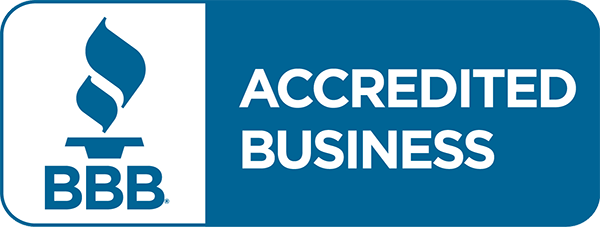What’s Your Headache Telling You?

We’ve all experienced the pain from a headache, but not all headaches are created equal. Your headache may signal more than the obvious. It could be that your body is trying to tell you something important about your health!
The most common contributors to headaches include inflammation and/or infection, vascular problems or untreated stress and muscle strain. Understanding the causes and patterns of your headaches can help you treat them efficiently and reduce them in the future. Here are some common types of headaches and their causes. *You should always consult a doctor if you have any questions or issues with your health.
Tension headache:
 Tension headaches are the most common, and least severe, type of headache. They’re generally caused from tight muscles in your neck, back, jaw, shoulders and scalp. Excessive stress, anxiety, fatigue, injury, heavy alcohol consumption, malnutrition, poor sleep quality or stress can cause, and aggravate, these muscle contractions. Tension headaches tend to be on both sides of the head and often start at the back of your head and spread forward. The pain may feel dull -or squeezing- and last anywhere from a few minutes to a few days.
Tension headaches are the most common, and least severe, type of headache. They’re generally caused from tight muscles in your neck, back, jaw, shoulders and scalp. Excessive stress, anxiety, fatigue, injury, heavy alcohol consumption, malnutrition, poor sleep quality or stress can cause, and aggravate, these muscle contractions. Tension headaches tend to be on both sides of the head and often start at the back of your head and spread forward. The pain may feel dull -or squeezing- and last anywhere from a few minutes to a few days.
Sinus headache:
A sinus headache causes pain in the front of your head and face. They’re associated with a deep and constant pain in the cheekbones, forehead, or bridge of the nose. The pain usually intensifies with physical activity and may occur with other symptoms, such as nasal discharge, feeling of fullness in the ears, fever, and facial tenderness or swelling. Sinus headaches are caused by an inflammation in the sinuses – the air-filled
cavities around your nose, eyes, and cheeks. When in good health, these areas allow air to circulate and mucus to drain. Inflamed, congested sinuses prevent healthy flow and cause pressure in the face. Leaning or bending down can amplify the pain, as well as exposure to cold and damp weather. If chronic, a sinus headache can cause additional health issues. Blocked sinus cavities are a pathogen breeding ground; they provide a place for viruses, bacteria and fungus to live and thrive. Yuck!
Migraine headache:
 This is not just a headache; migraines are often associated with an aura, which is a transient, reversible neurological visual, sensory, motor, or language deficit. The exact cause is unknown, but migraine headaches are associated with abnormal brain activity and genetic components. Most medical experts believe the attack begins in the brain, and involves nerve pathways and chemicals which affect blood flow in the brain and surrounding tissues. Common migraine triggers include food, strenuous exercise, hormonal fluctuations, weather, bright lights, unpleasant sounds and stress (among other things). In the same way each person experiences migraine differently, different people respond to different triggers. Pain during a migraine attack occurs on one side of the head, typically pulsating or throbbing in nature. Physical activity, strong or repressed emotions, fatigue and stress may intensify a migraines severity. The pain can last for hours to days. Many sufferers report additional symptoms such as sensitivity to light or sound, nausea, blurred vision and dizzy spells.
This is not just a headache; migraines are often associated with an aura, which is a transient, reversible neurological visual, sensory, motor, or language deficit. The exact cause is unknown, but migraine headaches are associated with abnormal brain activity and genetic components. Most medical experts believe the attack begins in the brain, and involves nerve pathways and chemicals which affect blood flow in the brain and surrounding tissues. Common migraine triggers include food, strenuous exercise, hormonal fluctuations, weather, bright lights, unpleasant sounds and stress (among other things). In the same way each person experiences migraine differently, different people respond to different triggers. Pain during a migraine attack occurs on one side of the head, typically pulsating or throbbing in nature. Physical activity, strong or repressed emotions, fatigue and stress may intensify a migraines severity. The pain can last for hours to days. Many sufferers report additional symptoms such as sensitivity to light or sound, nausea, blurred vision and dizzy spells.
Rebound headache:
Many medications can cause headaches… even those taken for pain relief! Rebound headaches are caused by overuse of headache medication. Taking pain relievers for more than a couple of days a week could trigger rebound headaches. Regular use of medications alters the way certain pain pathways and receptors work in the brain and your body adapts to the medication. The frequency depends on the type and dose of overused drug and the frequency of headaches. In addition, overuse of fat-soluble vitamins, like vitamin A and D, or drugs that contain nitrates can also trigger headaches.
Instead of rushing to take a pill to treat the pain of a headache, take note of the signals, duration, severity and location of them. In the meantime, here are five ways to help alleviate headache pain naturally:
 1.) Get Quality Sleep
1.) Get Quality Sleep
One of the most common headache triggers is poor sleep quality.
Rebound headaches tend to occur daily, often severe in the early morning, improves with pain- relief medication but then returns as the medication wears off. Disrupted, excessive or too little sleep may all aggravate head pain. Learning to keep the same sleep and wake time, and not getting too much sleep is a great start when adopting better sleep habits.
2.) Keep Track Of Your Headaches
If your headaches are chronic, keeping a “headache” journal may be helpful. When you feel a headache coming on, jot down the date, time, symptoms, severity and what time it ends. Keeping track of what is happening and circumstances surrounding a headache or migraine can help you to more easily be aware of what a trigger is for you. Once you know what the trigger may be, you can take the necessary steps to avoid that trigger.
3.) Eat A Healthy, Balanced Diet
Low blood sugar is a common cause of headaches. Skipping meals can do your body more harm than good. The brain reacts to rapid changes in blood sugar or to blood sugar that is too low with a migraine or headache. Try to eat nutrient dense, whole, unprocessed foods as often as possible. Although we all respond differently, limit the consumption of artificial sweeteners, caffeine and alcohol – which trigger inflammation. Eating several small, protein-rich meals a day will keep your blood sugar steady, your stomach full and your metabolism working efficiently!
Stay Hydrated
Start putting water into your body upon waking and make a habit of staying hydrated
throughout the day. Keeping yourself hydrated helps lower the possibility of headaches,
although hydration also helps stop it from getting worse the moment one hits. Dehydration may lead to the shrinkage of parts of the meninges (membranes covering the brain and spinal cord),
which attributes to pressure and pain (1).
Learn To Let Go & Unwind
 Stress can trigger and even aggravate a headache, so it’s important to learn to prioritize and do what you are able to do each day. Deep breathing, relaxing to music, or using mental imagery can help people unwind and also help alleviate pain. Try to take at least 10 minutes out of the day to set everything aside and just breathe. Indulge in a little R&R by treating yourself to a warm bath before bed instead of watching television. Take it a day at a time, and live every moment to the fullest.
Stress can trigger and even aggravate a headache, so it’s important to learn to prioritize and do what you are able to do each day. Deep breathing, relaxing to music, or using mental imagery can help people unwind and also help alleviate pain. Try to take at least 10 minutes out of the day to set everything aside and just breathe. Indulge in a little R&R by treating yourself to a warm bath before bed instead of watching television. Take it a day at a time, and live every moment to the fullest.
Sources:
(1) Spigt MG et al (2005) Increasing the daily water intake for the prophylactic treatment of headache: a pilot trial. Eur J Neurol 12(9):715-8




